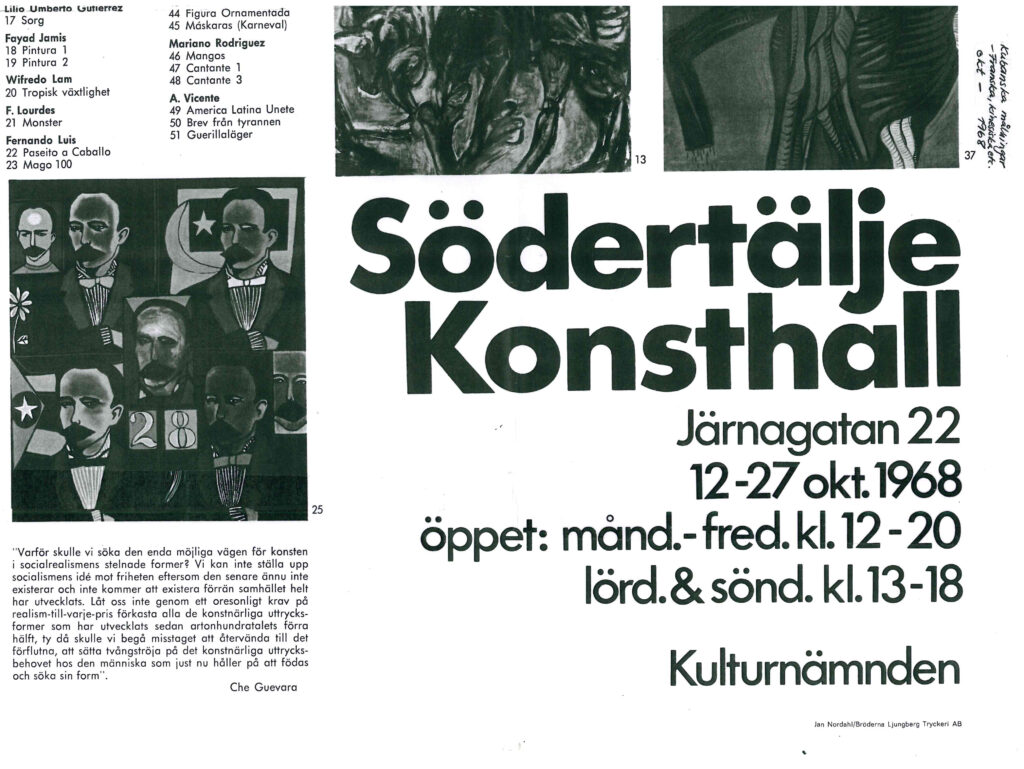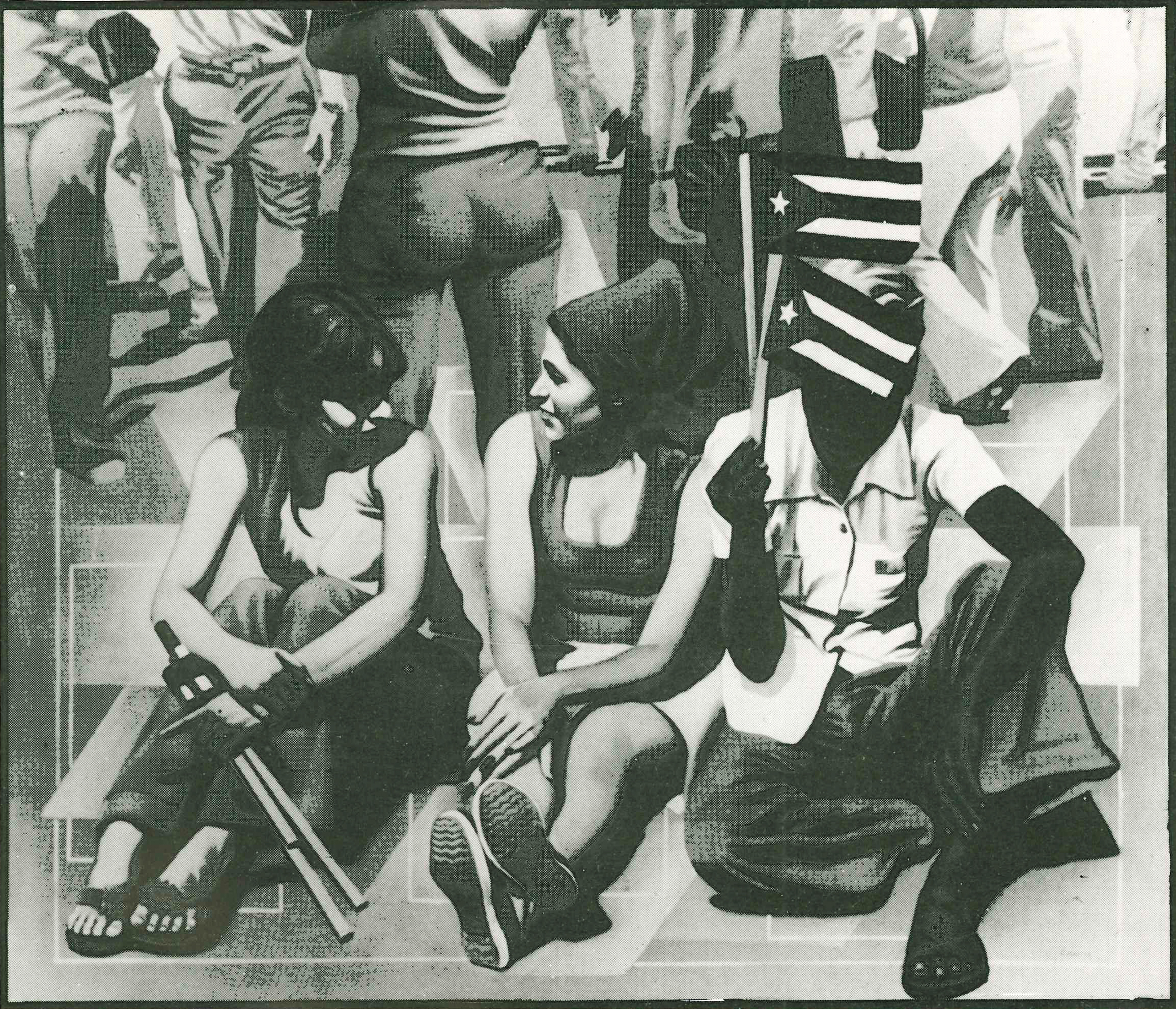


The revolution has for the Cuban people created opportunities of developing a new society, a new human and a new way of life. In this process also art’s role has changed. The myth of art’s exclusivity has been shattered and been replaced by a broader cultural activity, an activity that turn to all people and that wants to create new forms of contact, communication and community.
The artist has descended from their ivory towers and become a person amongst other persons, a part of existence on the same conditions as other citizens and therefore also part of the development that is common for all of society.
As a result of this change, it became the task of the artist to first and foremost create art that directs itself outward, to society, an art that expresses the reality of the country and with a message that can be understood and experienced by as many people as possible. When it comes to the image form, openness and searching has been necessary and stimulating ingredients in trying to find an art that “works”. This has, in turn, resulted in the diversity we can now see in Cuban art. Fidel Castro has said: Art must be in reach for the people in order for it to be understood and experienced by them.
Cuba’s artists see it as an important task to try to depict that which is specifically Cuban. This goes for the revolutionary art, the everyday realism and the art that builds upon old myths and tales with an Afro-Cuban origin. When it comes to the latter area, there is a rich well to take from, with many opportunities for expression and a multitude of potery.
From “Art from Cuba” by Birgitta Dannfelt-Haake, 1975